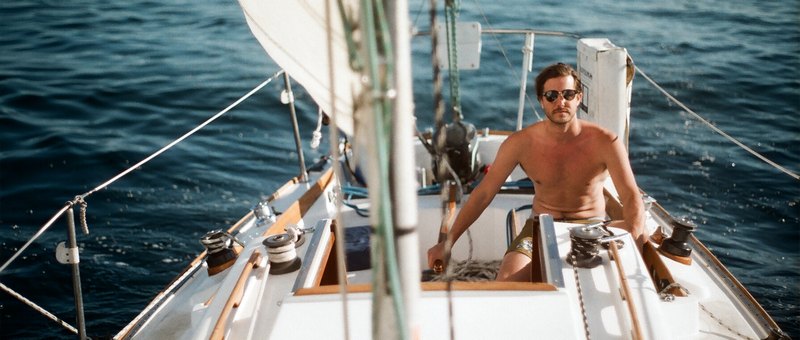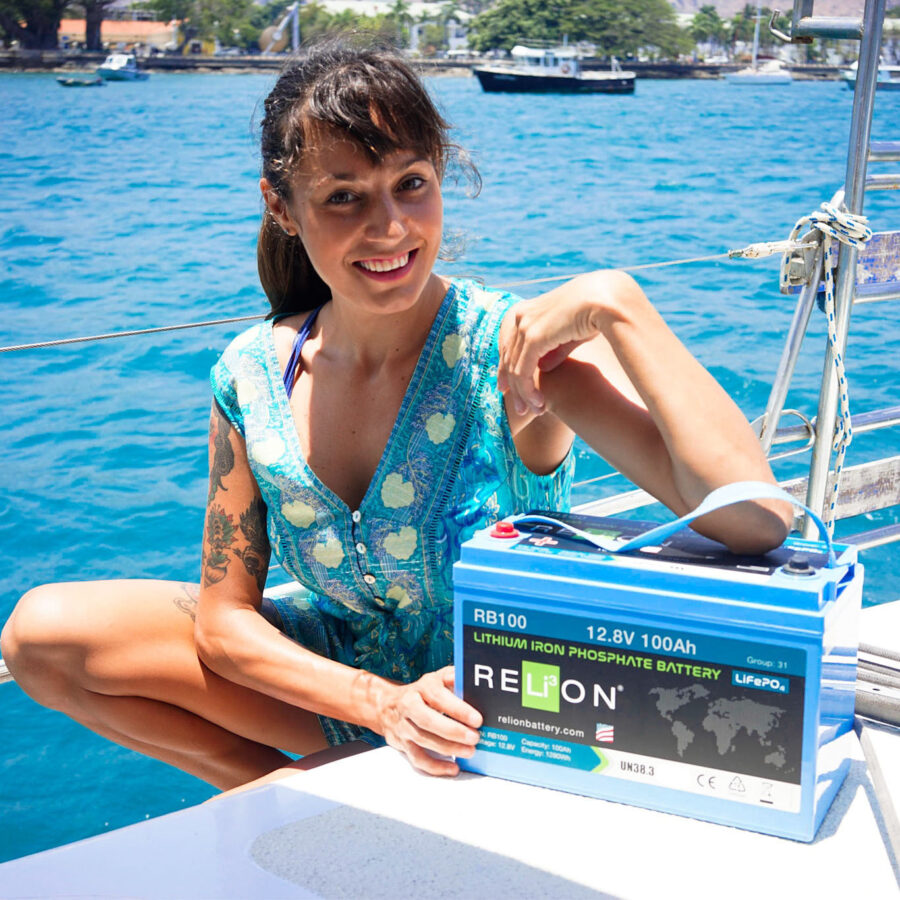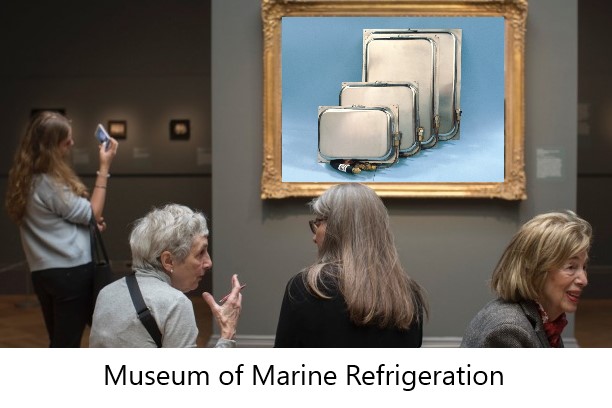Phone: (301) 352-5738
Email: info@CoastalClimateControl.com
Office | Warehouse:
1598 Whitehall Road, Suite D
Annapolis, Maryland 21409
A Good Whacking

Why you shouldn’t run your Frigoboat Keel Cooled system out of the water
“You’ve been a very naughty boy, Tompkins, and you must take your punishment. Disobedience has consequences.” So says the headmaster in a typical schoolboy romp in the boys’ magazines of my youth. A few whacks from a cane and life goes on, although these days I suspect it might be a virtual whacking incorporating a VR headset.
Unfortunately, some misdeeds require considerably more than just a simple fix, especially some of the mistreatment we see Frigoboat systems subjected to. Sometimes it’s accidental, sometimes it’s over-enthusiasm, but sometimes people also simply ignore the manufacturers’ instructions.
The Frigoboat Keel Cooler refrigeration system is a case in point. The actual Keel Cooler component is a condenser/heat exchanger that is the external component of a thru-hull fitting and is mounted on the exterior of the boat, under water, and is designed and engineered to be in operation only when the vessel is in the water.
The Keel Cooler condenser is where the hot, pressurized refrigerant gas from the compressor is cooled and condensed into a liquid, still at high pressure. This is achieved by running the gas through a cupro-nickel tube that is embedded within a sintered bronze block on the exterior of the hull. The sintering, which comprises masses of tiny bronze balls melded together under extreme heat and pressure, is porous, allowing the ocean surrounding it to seep in and provide very efficient heat exchange.
We often hear quizzical comments regarding the compact nature of the Keel Cooler, but the Frigoboat Keel Cooler can service fridges up to 20 cu ft, and freezers up to 10 cu ft in waters from tropical to freezing and everything in between.
Water has 23 times more thermal conduction potential than air, which means that an awful lot of air is required to do the same job as just a few drops of water. This is why water cooling for a refrigerant condenser is so much more efficient than using air in the elevated ambient temperatures found in The Tropics and other high-heat areas.
The Frigoboat Keel Cooler is designed and engineered to promote ample amounts of heat transfer when deployed in water temperatures common to those locations.
With an air-cooled condenser, there is a much smaller temperature difference between the incoming cooling air and the hot refrigerant gas in high ambient temperatures than in cooler conditions, so less heat exchange takes place, and more air is required to maintain the same level of performance. But there is a fixed rate of air flow from the fan, so the amount of heat exchanged and the overall system efficiency both decrease as ambient temperatures rise.
To make an air-cooled condenser as efficient as a Keel Cooler in tropical ambient conditions would require a big, bulky condenser with huge surface area, and a mega-fan blasting a gale through it. Obviously, this is both impractical and cost prohibitive.
If the condenser can’t provide the required rate of heat exchange, i.e., if it is too small for the application and/or conditions, then not all the gas will be condensed, and some will exit the condenser along with the liquid. This is known as “flash gas” (an upper-crust fart?) and will reduce system efficiency accordingly.
If, against the manufacturer’s advice, a Frigoboat Keel Cooler is run when out of the water, the Keel Cooler will then effectively become a very undersized and inefficient air-cooled condenser. The system will probably continue to perform without any perceived issues, and that there is the problem. For although it is stated that a Keel Cooler should never be operated when out of the water, it will most probably appear to be working just fine like that, leading to the temptation to leave it chugging along.
But danger lurks ahead, for the longer the system is left operating like this, the greater the potential for irreversible damage.
The pressure and temperature of refrigerant gases in an enclosed environment are directly related. So, if a Keel Cooler is being operated when out of the water, the pressure of the gas will be greatly elevated along with its temperature due to the condenser being so inefficient. This makes the compressor work harder, and harder, and harder. Much harder in fact than it is designed to work.
Reciprocating compressors like the Danfoss/SECOP BD35/50 models in Frigoboat Keel Cooled systems don’t really like to work with pumping ratios much higher than 10:1. But the higher the discharge gas pressure, the greater the pumping ratio and the harder the compressor must work, getting hotter and hotter in the process from the mechanical exertion. A Keel Cooler working in air can generate pumping ratios easily in excess of 20:1, at which point the poor little piston in the compressor is struggling like heck to push against high pressure one instant and then pull against low pressure the next. That excessive amount of work generates a lot of heat which can, together with the excessive pressure, eventually burn a hole through the head gasket of the compressor.
Oh boy. Now we have a real problem! And all the while the system is seemingly still performing as normal, leaving the operator oblivious to the potentially damaging forces the compressor is being subjected to.
These compressors are hermetic types, i.e. sealed “cans” with the motor and compressor encased in a steel shell. See: https://www.youtube.com/watch?v=f99HvNOUHe4
The high pressure, high temperature gas is fed out of the housing in a tube, whereas the returning cool, low-pressure gas is dumped directly into the shell to find its own way into the intake on the compressor head. But if hot high-pressure gas is escaping from a burned head gasket, some of it will recirculate straight back into the compressor intake, further raising the temperature of the compressor shell which is already extremely hot as a result of the excessive pumping ratio.
The escaping high pressure gas mixing with the low-pressure gas inside the shell will also raise the suction pressure, and as the pressure of the suction gas determines the temperature at which the evaporator operates, the evaporator will now be working at a higher temperature. This may or may not materialize as temperatures creeping up and up inside the box, but often the first report of trouble is that a freezer cannot maintain temperatures as low as previously. This may at first be attributed to the Keel Cooler being run in air and not water, but the truth will dawn once the boat is returned to the water and there is no improvement in performance.
There are often visual and other clues to the damage being done. With the Keel Cooler working in air, the compressor will be extremely hot and the current draw will be quite excessive due to the compressor having to work so hard. With the boat back in the water, the usually brilliant white labels on the compressor may have become discolored and turned pink or brown, and in extreme cases the copper tubes that connect the refrigeration components can become so hot that they oxidize and turn black.
There is a test that a technician can run on a suspect system to see if the compressor can reach designed suction pressures, and if the test fails there’s no option other than to replace the compressor. Thanks to the Frigoboat self-sealing couplings this is not such a difficult task, however it is expensive and may require a technician to balance the refrigerant charge.
Actions have consequences. Keel Cooled systems can and do get left on, or turned on accidentally, when the boat is out of the water, and if the situation is rectified quickly there might be no negative results.
But for those that knowingly operate a Frigoboat Keel Cooled system in such a fashion for extended periods, the consequences can be severe. For these folks, a few whacks with a cane would I’m sure be an attractive alternative compared to the expense and inconvenience of having to replace a compressor.
By accepting you will be accessing a service provided by a third-party external to https://coastalclimatecontrol.com/






